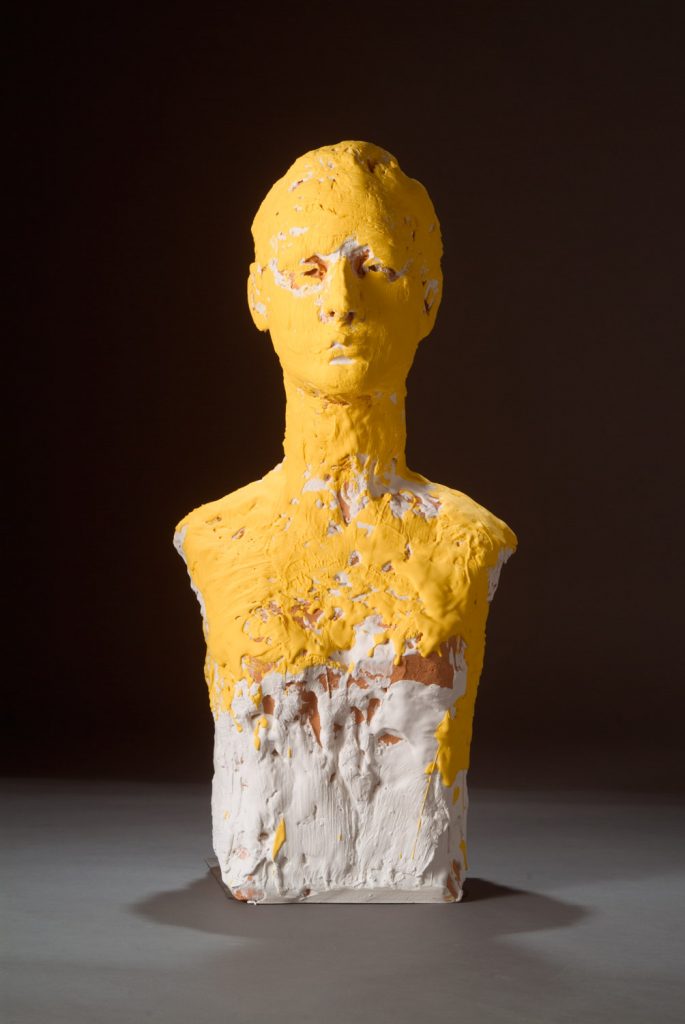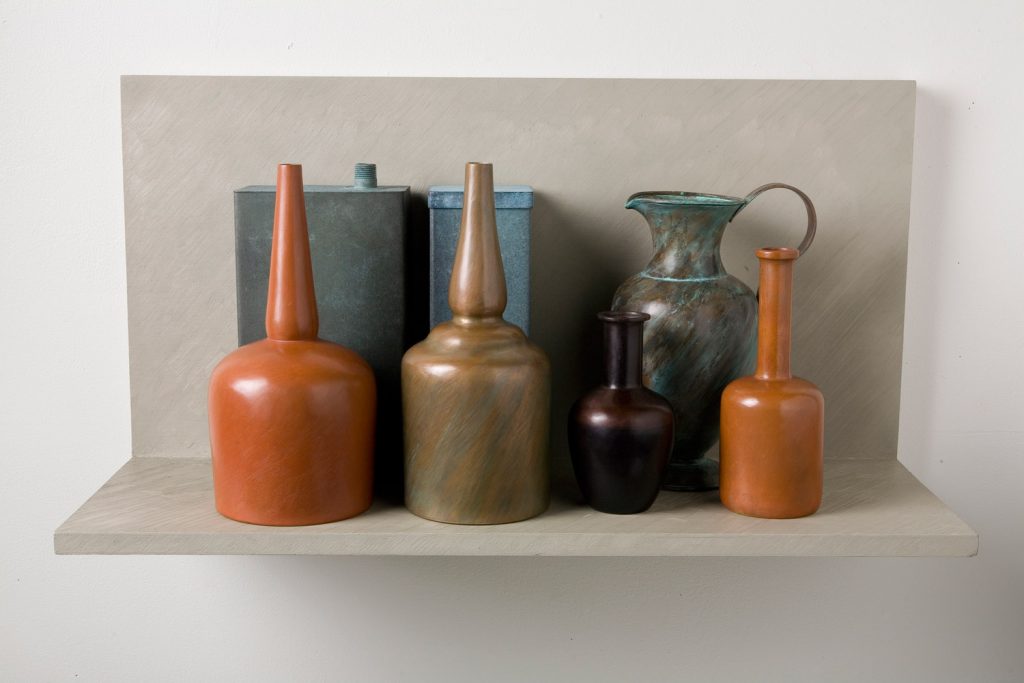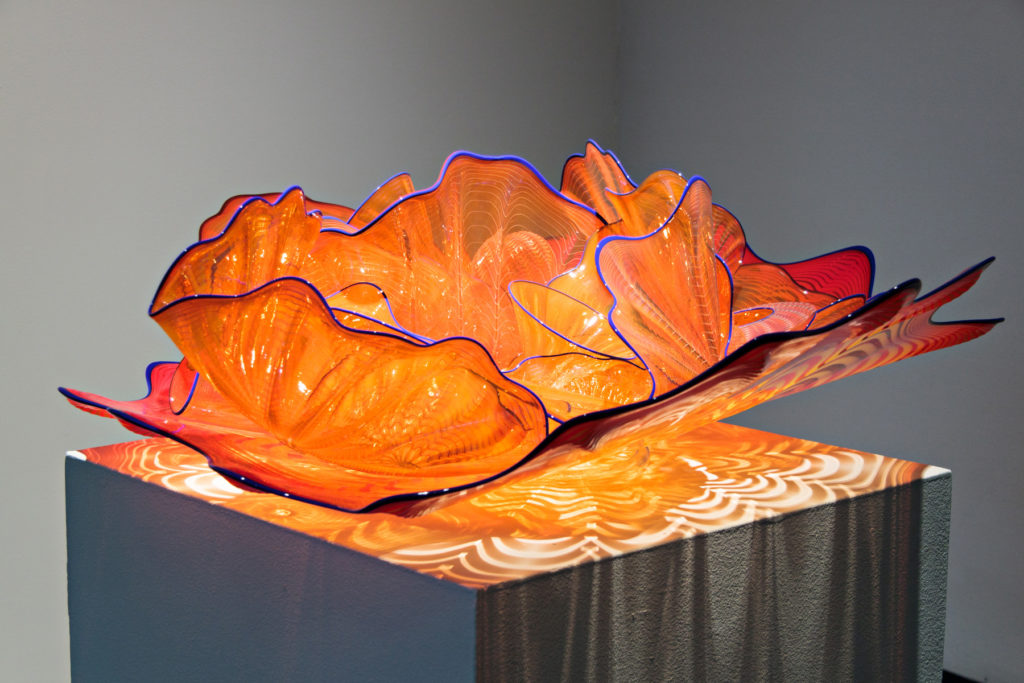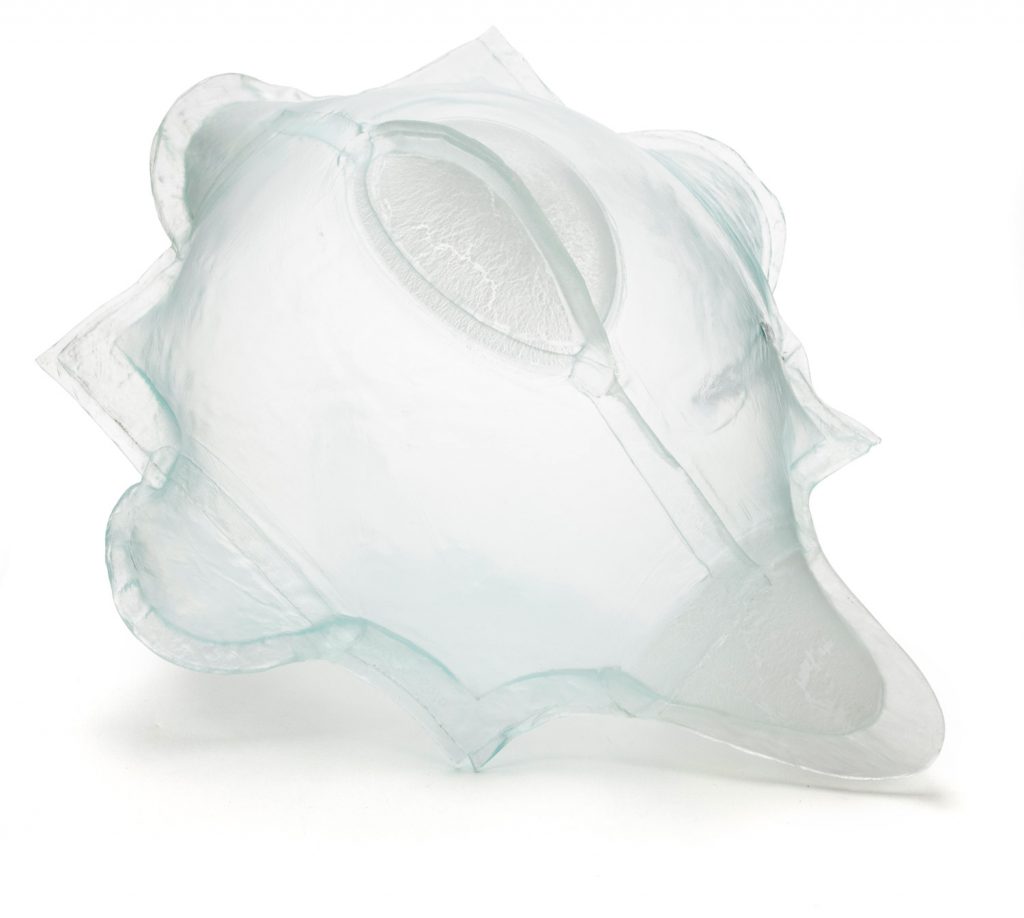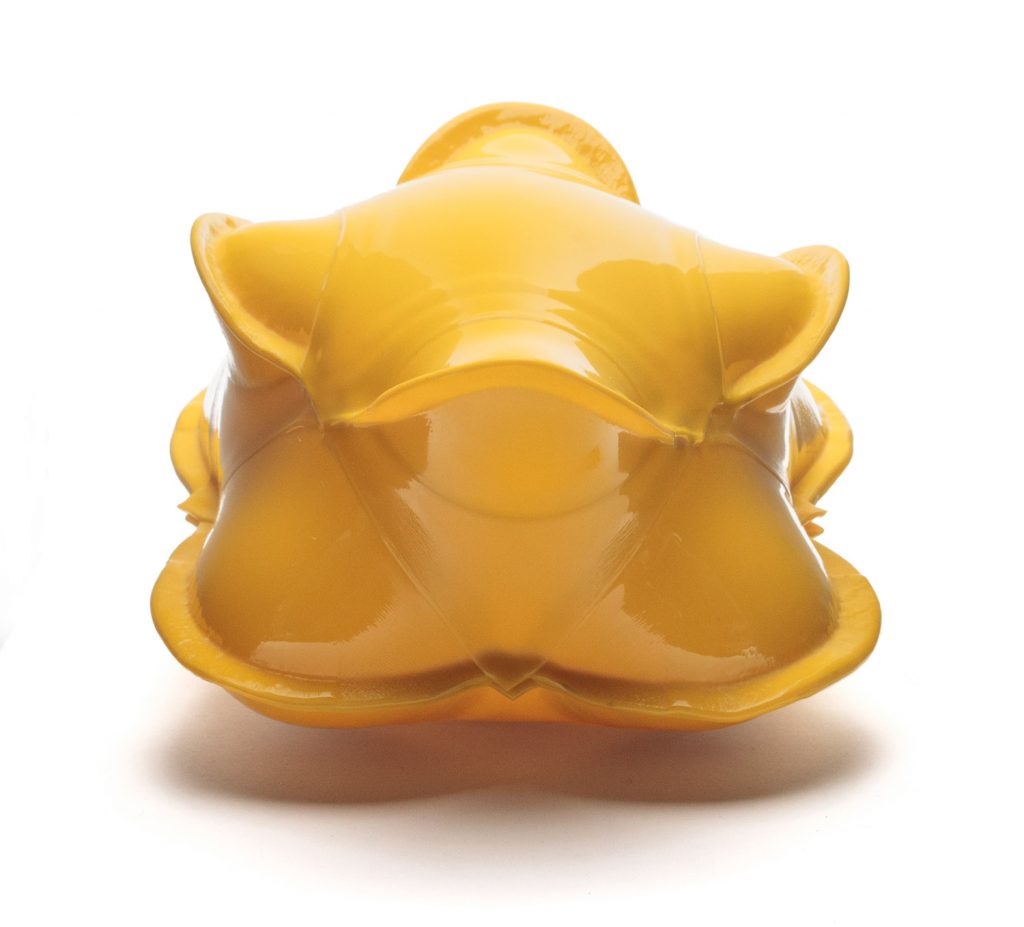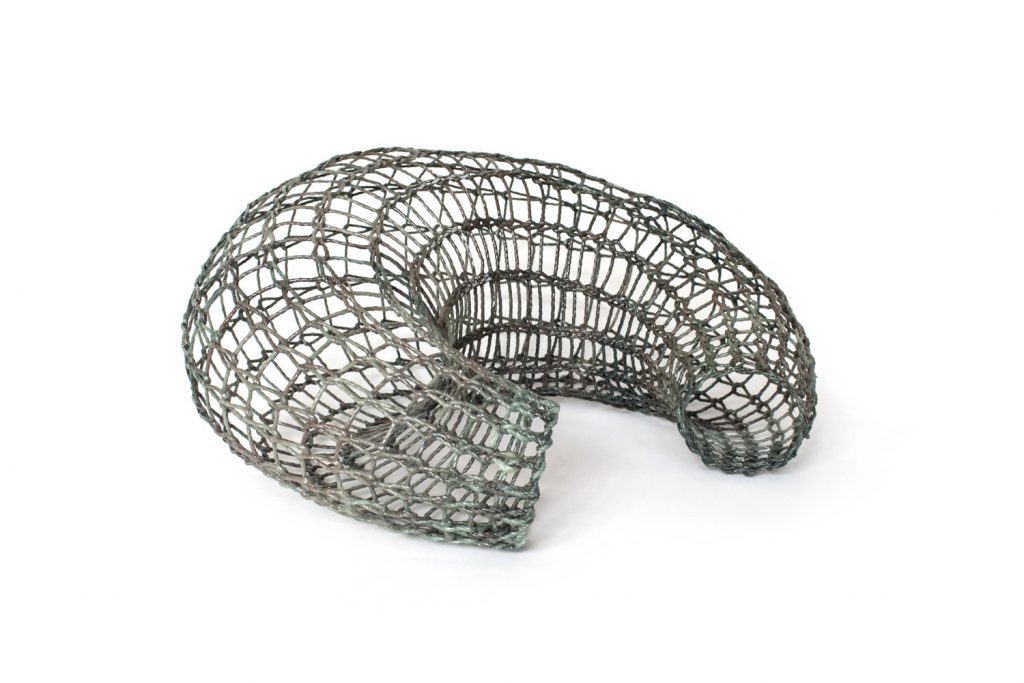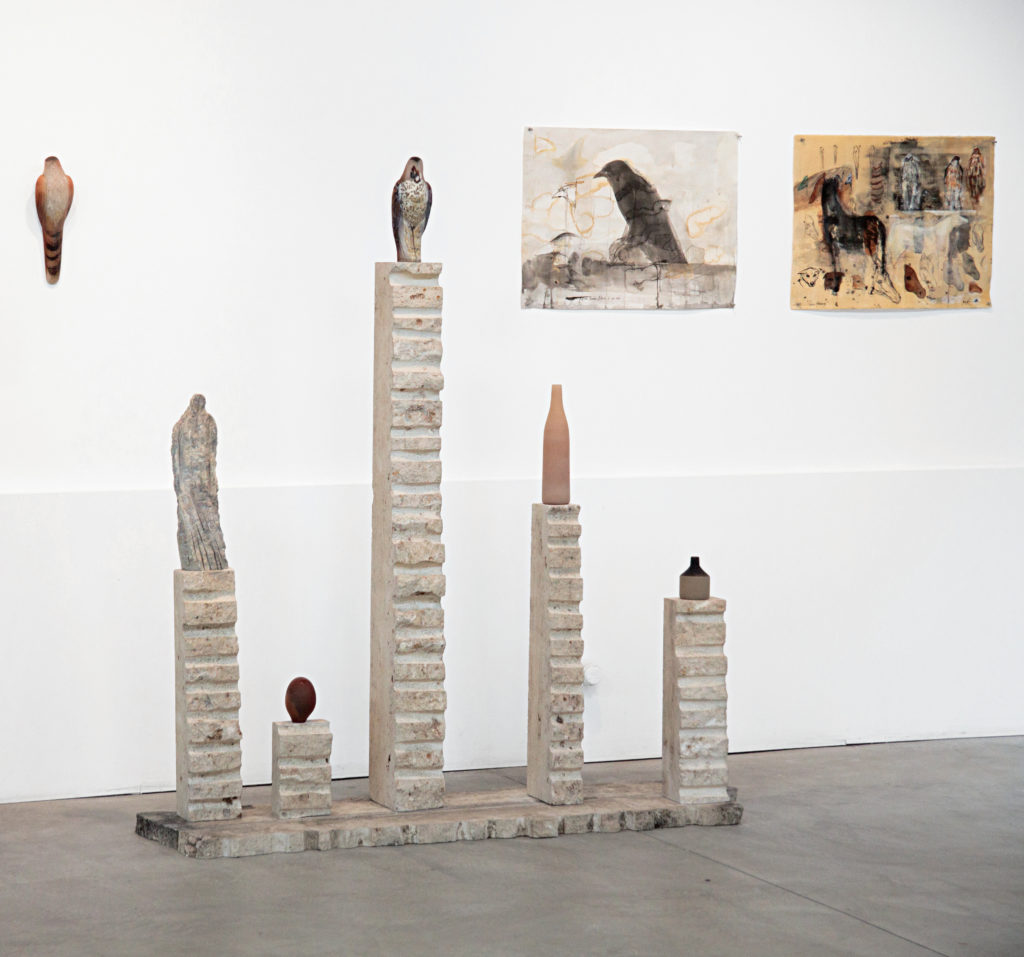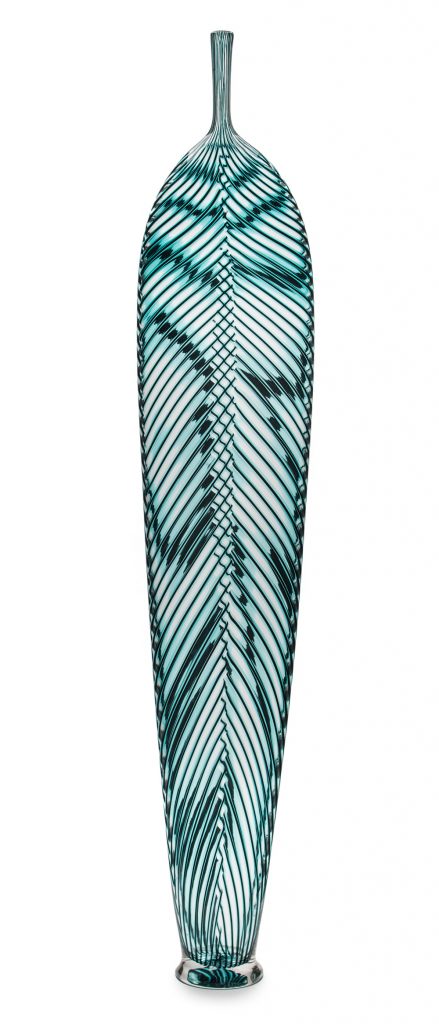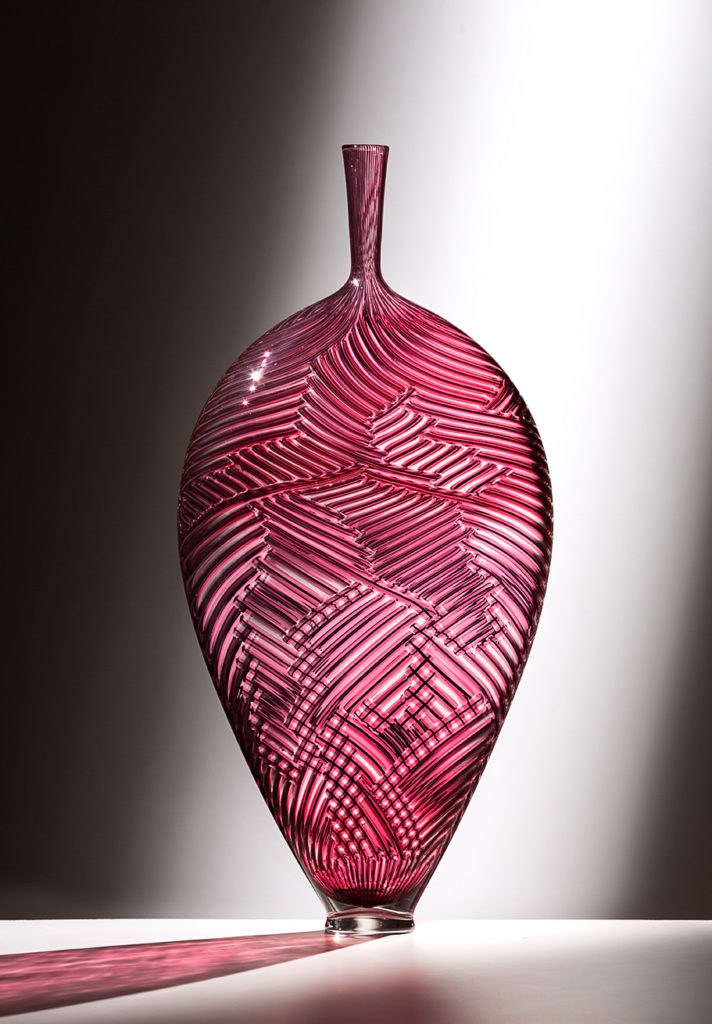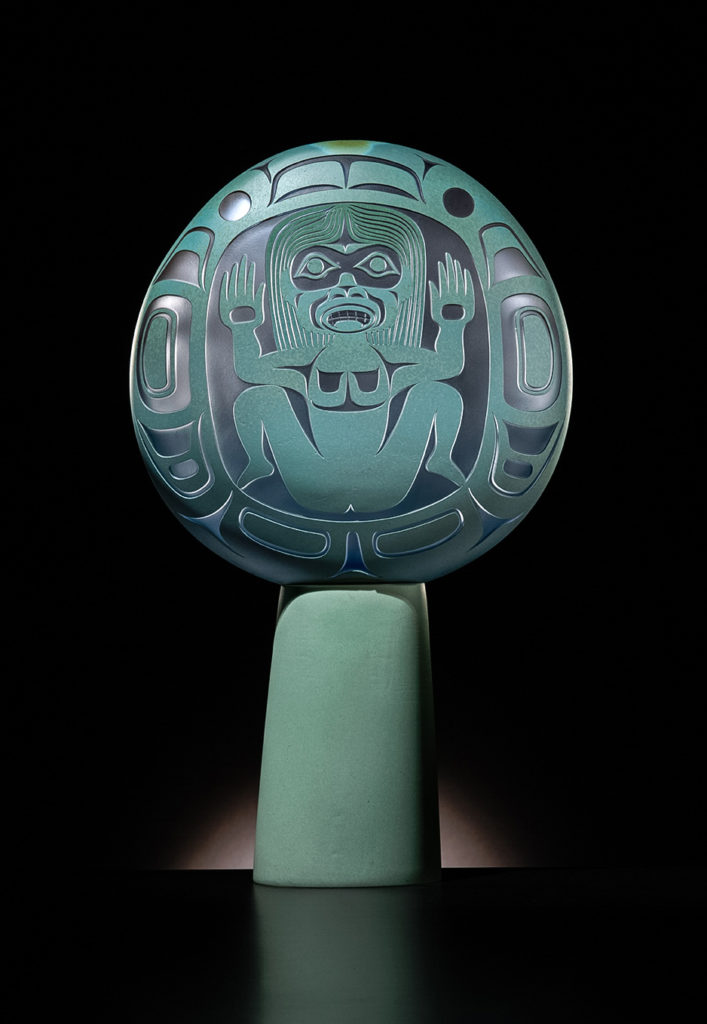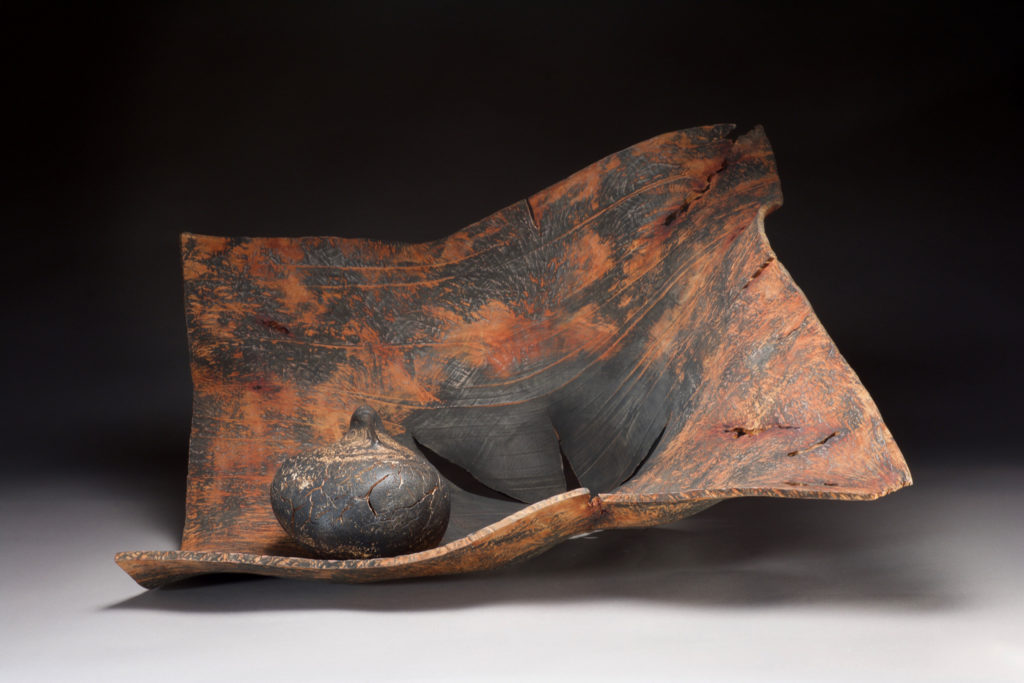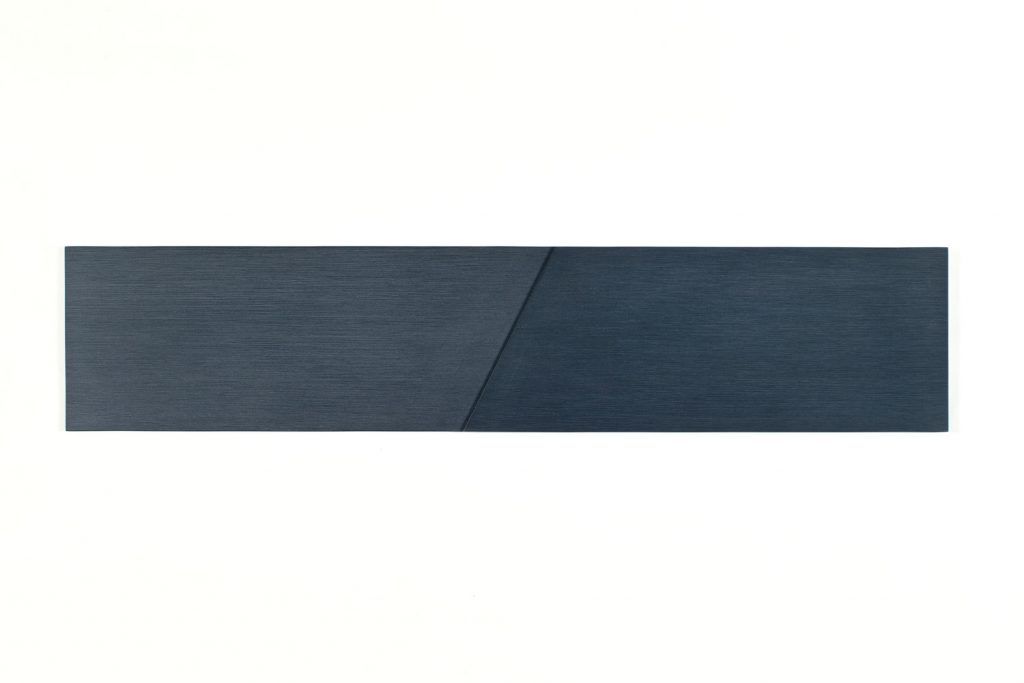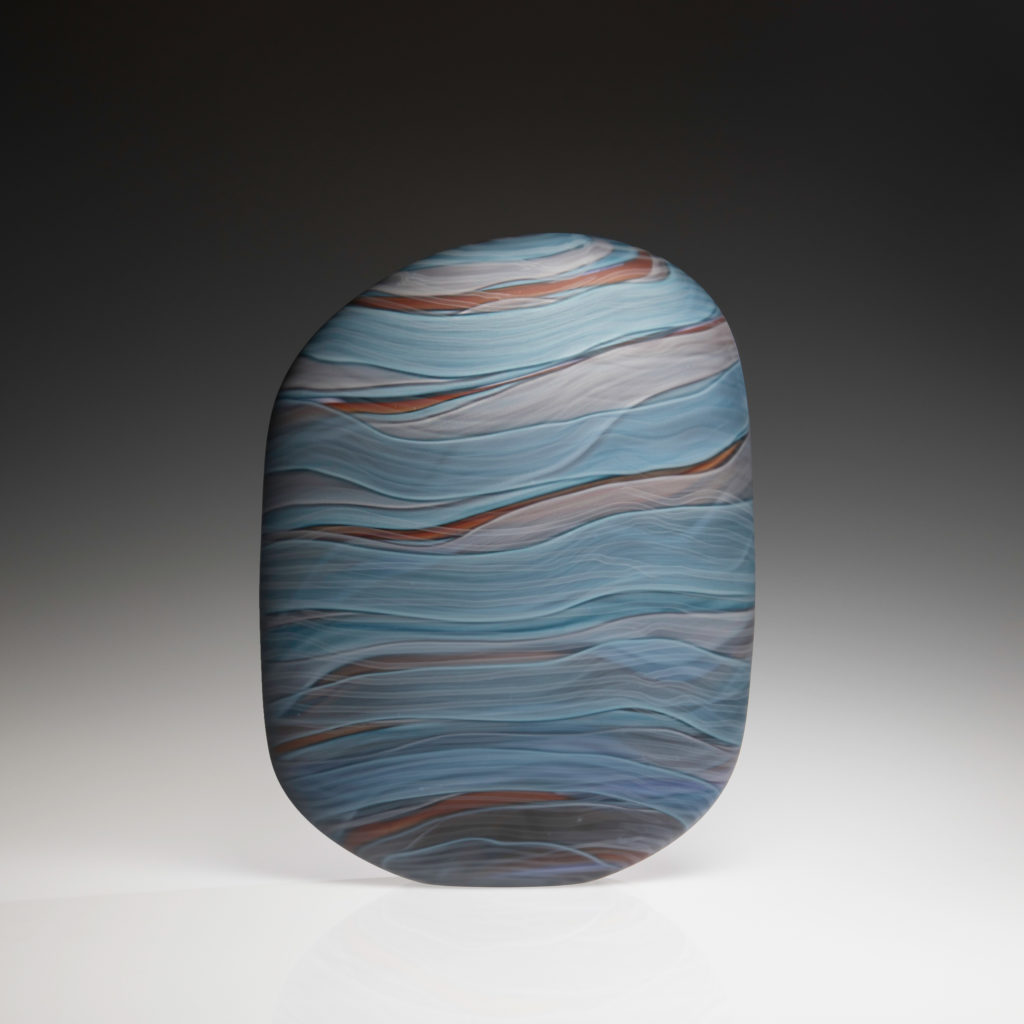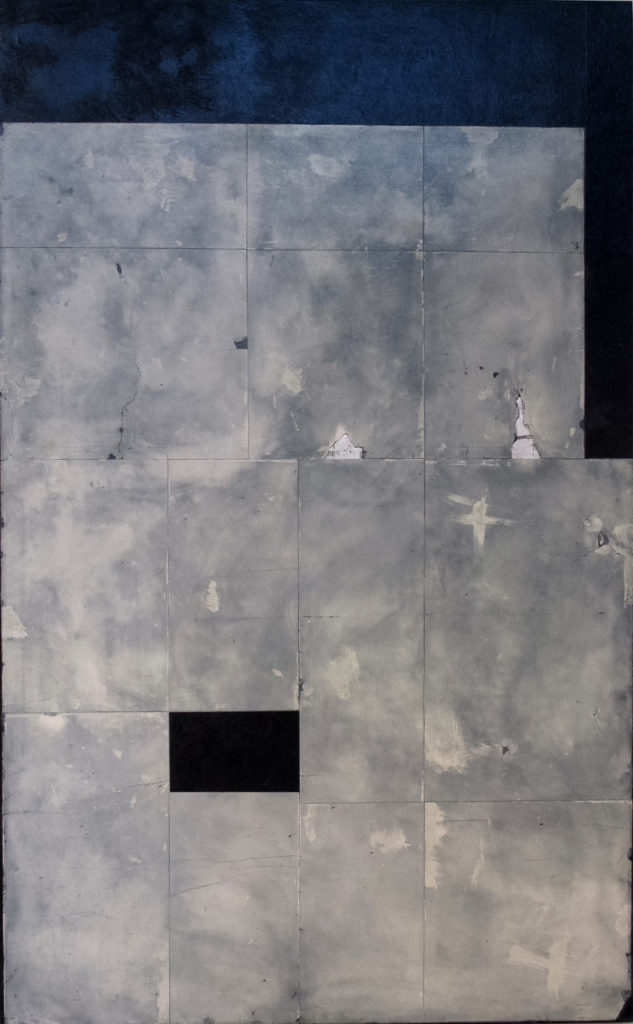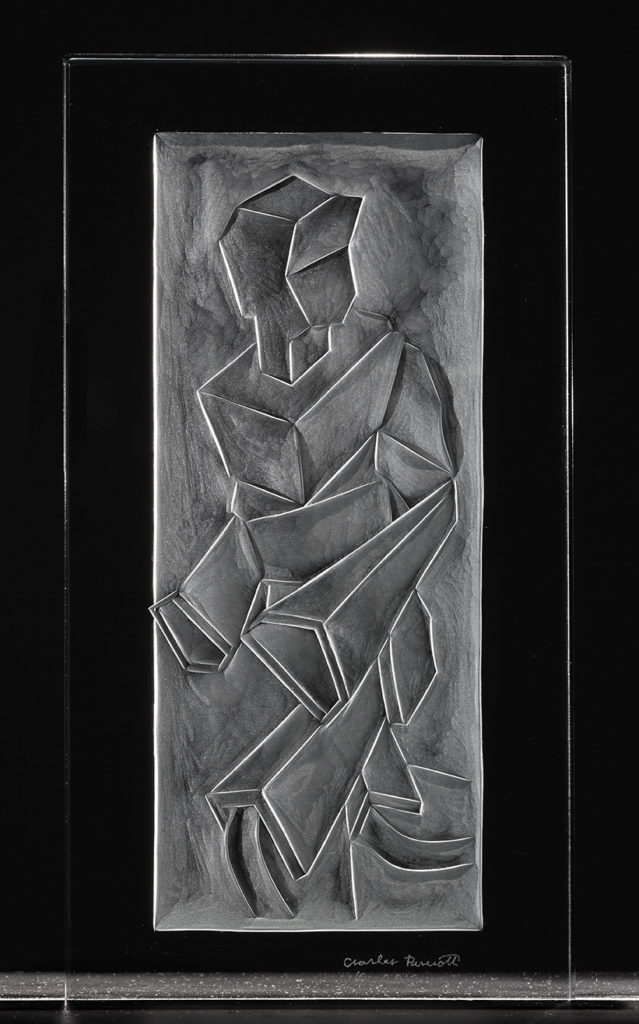Annual Gallery Artist Group Exhibition
-
About
Clare Belfrage - view profile
Inspired by experiences in the natural world for many years now, Clare Belfrage has forged an international reputation for her distinguished work with detailed and complex glass drawing on blown glass forms.
She has maintained a vibrant practice for thirty years. She has been an active part of artists’ communities, particularly in Adelaide and Canberra, including the glass based studio blue pony, of which she is a founding member, the JamFactory Glass Studio in Adelaide and, Canberra Glassworks where she played the pivotal role of Creative Director from 2009 to 2013.
Clare has had a long involvement in education and has lectured in the glass programs at the University of South Australia, SA, and Ohio State University, USA and Curtin University, WA. She is currently an Adjunct Professor at the University of South Australia. She has also taught numerous workshops throughout Australia, New Zealand, Japan, and the United States.
In addition to Australia, Clare regularly exhibits in North America, Europe, Hong Kong, and New Zealand. Her work has been recognized for its innovation and originality and in 2005 and, 2011, she was awarded the Tom Malone Glass Prize by the Art Gallery of Western Australia. In 2016 she was awarded the inaugural FUSE Glass Prize for Australian and New Zealand glass. In 2018 Clare was the South Australian Living Artist Festival feature artist and subject of the festival’s annual monograph, Rhythms of Necessity, written by Kay Lawrence and Sera Waters.
Clare’s work is represented in major public collections including National Gallery of Australia, Canberra, Corning Museum of Glass, USA, Museo do Vidro, Marinha Grande, Portugal, Tacoma Museum of Glass, USA, National Art Glass Collection, Wagga Wagga, ArtBank, NSW, Art Gallery of South Australia, Art Gallery of Western Australia, Museum and Art Gallery of Tasmania and Northern Territory Museum.
-
Mark Bennion
- view profile
Seattle born Bennion is a painter and sculptor who has shown his work across the United States, Canada, and Europe since 1968. He lives and works on Vashon Island, near Seattle, Washington. Following in the tradition of Northwest artists such as Mark Tobey, Paul Horiuchi, Morris Graves and William Ivey, all of whom shared an affinity for painting on paper as well as a deep reverence for eastern art, Bennion sees his frescoes as a “confluence of eastern and western techniques and traditions.” Like the frescoes of Pompeii, Bennion’s paintings convey a sense of history and tradition. A practicing Buddhist for much of his adult life, Bennion is concerned more with the moment of inner peace and meditation, than with the specific story each painting or sculpture tells. His hopes are that the viewer finds great inspiration, or simply a moment of insight, in the work.
Strongly encouraged by mentor William Ivey (1919-1992), Bennion spent years developing his unique painting process, which he calls fresco — using oil paint, dry pigment on plaster and paper which is attached to a panel or canvas. This process lends itself to many of his interests; textures that recall ancient walls and decaying structures are overlaid with markings and shapes of the mythology from many cultures, creating a surface that is both familiar and unknown. The work on plaster is painted and sanded, and painted over and over, sometimes 4 or 5 layers but often up to 10 or 12 until the work is complete.
Bennion is also a sculptor; crafting mostly large scale geometric welded steel pieces and numerous outdoor installations. His painting and sculptures share a meditative and often poetic quality, a quality that beautifully reflects Bennion’s own philosophy and approach to making art.
-
Ling Chun
- view profile
I have a drive, a lust and greed for color.
My ceramic forms are “playgrounds for glaze,” and I like to challenge the rules and roles of ceramics by disassociating the material from its stereotypical or culturally accepted uses. Removing still-hot pieces from the kiln, I apply liquid glazes to the surface creating a sizzling sound and a haze of steam until the glaze sticks. It is an intuitive process that emerges through multiple firings and layers of glaze. The work is born of the spontaneous dripping, sliding, running, climbing and crawling that occurs; the movement of the material is my medium.
The use of hair—which I see as a metamorphosis of the clay—serves as an extension of the ceramic process and also transgresses the permanence of clay, resetting the boundaries of ceramics reflected by cultural standards. My work also addresses my transitional stage between multiple cultures and languages through the complex layering of materials onto my ceramic sculptures. I believe contemporary ceramics will serve as a latter-day artifact of our current acknowledgment of cultural identity. It is a material strongly connected with history but never limited just to its heritage—a new age of ceramics will be one where style is no longer restricted to the old forms.
Ultimately, I desire to invite others into my side of the spectrum and to learn and study about how ceramics is more than just clay.
-
Marita Dingus
- view profile
Born in Seattle in 1956, Dingus attended Tyler School of Art at Temple University in Philadelphia (BFA, 1980) and San Jose State University (MFA, 1985). She has received a Visual Art Fellowship from Artist Trust (1994), a John S. Guggenheim Fellowship (1999), and the Morrie and Joan Alhadeff PONCHO Artist of the Year Award (2005).
Dingus has had solo shows at Henie Onstad Kunstsenter and The Stenersen Museum, both in Norway (2002, 2006), as well as the Museum of Glass in Tacoma, WA (2005 – 2006). Her work has been included in Nature/Culture organized by The Society for Contemporary Craft in Pittsburgh (2006 – 2008), Outwin Boochever Portrait Competition at the National Portrait Gallery in Washington, DC (2006 – 2007) and 21st Century American Women Artists at the Residence of the United States Ambassador to NATO in Brussels, Belgium (2006 – 2010). Her work is in many regional museums and corporate collections. Dingus currently lives and works in the state of Washington and is represented by Traver Gallery in Seattle.
“I consider myself an African-American Feminist and environmental artist. My approach to producing art is environmentally and politically infused: neither waste humanity nor the gifts of nature. I am primarily a mixed media sculptor who uses discarded materials. My art draws upon relics from the African Diaspora. The discarded materials represent how people of African descent were used during the institution of slavery and colonialism then discarded, but who found ways to repurpose themselves and thrive in a hostile world. I seek to use recovered materials, reconfiguring and incorporating them into pieces of art where possible and appropriate, and to mitigate waste and pollution in all my work. This is a creative challenge, but a commitment I incorporate into my professional and personal activities.”
-
Mel Douglas
- view profile
Mel Douglas is one of the most celebrated artists working in glass today. Douglas’s refined and detailed work employs a minimalist aesthetic along with considered mark-making to engage a dialogue of how line and form can define and defy our understanding of space and volume. Douglas’ work explores the potential, versatility, and flexibility of glass as a material for drawing, and with it, expands our view of glass as a sculptural medium.
In Douglas’s words, “objects and drawings are often thought of as two separate entities. my pieces explore and interweave the creative possibilities of this liminal space, where the form is not just a support for drawing; but a three-dimensional drawing itself. Using the unique qualities of the material and the rich potential of mark-making on and with glass, I am using line as a way to inform, define and enable dimensional space”.
Mel Douglas has worked as an independent studio artist since graduating from the Canberra School of Art, Australian National University, in 2000. In 2020 Douglas was awarded a Ph.d. for her practice-lead research investigating how we can understand studio glass through the aesthetics of drawing. In addition to winning the 2020 and 2014 tom Malone Prize- a prestigious award through which a work is acquired each year into the collection of the National Gallery of Western Australia – Douglas has received several major awards, including the Ranamok Glass Prize in 2002 and the International Young Glass Award in 2007 from the Ebeltoft Museum of Glass.
In 2019 her work was the inaugural acquisition for the Australian National Gallery of Art’s Robert and Eugenie Bell Decorative Arts and Design fund. Douglas’ work is held in the private collections and public institutions internationally, including the Corning Museum of Glass, The Chrysler Museum of Art, the Ebeltoft Museum of Glass, and the National Gallery of Australia.
-
Jun Kaneko
- view profile
Jun Kaneko was born in Nagoya, Japan in 1942. He studied painting with Satoshi Ogawa during his adolescence – working in his studio during the day and attending high school in the evening. He came to the United States in 1963 to continue his studies at Chouinard Institute of Art when his introduction to Fred Marer drew him to sculptural ceramics. He proceeded to study with Peter Voulkos, Paul Soldner, and Jerry Rothman in California during the time now defined as The Contemporary Ceramics Movement in America. The following decade, Kaneko taught at some of the nation’s leading art schools, including Scripps College, Rhode Island School of Design and Cranbrook Academy of Art.
Based in Omaha since 1986, Jun Kaneko has worked at several experimental studios including European Ceramic Work Center in The Netherlands, Otsuka Omi Ceramic Company in Japan, Fabric Workshop in Philadelphia PA, Bullseye Glass in Portland OR, Acadia Summer Arts Program in Bar Harbor ME, and Aguacate in Puerto Vallarta, Mexico. Over the course of his career, he has partnered with industrial facilities to realize large-scale, hand-built sculptures. The first was his 1982-1983 Omaha Project at Omaha Brickworks. Later sculptures include his Fremont Project, completed in 1992-1994 in California, and most recently his Pittsburg Project completed in 2004-2007 in Kansas. Both of these later series of sculptures were created at Mission Clay Products. In April 2013, his exhibition Myths, Legends and Truths opened at Millennium Park in Chicago featuring thirteen nine-and-a-half foot tall Dangos and twenty-three of his Tanukis. This new body of work by Kaneko draws upon the myths and legends of the tanuki figure.
His artwork appears in numerous international and national solo and group exhibitions annually and is included in more than seventy museum collections. He has realized over thirty public art commissions in the United States and Japan and is the recipient of national, state and organization fellowships. Kaneko holds honorary doctorates from the University of Nebraska, the Massachusetts College of Art & Design and the Royal College of Art in London.
Kaneko is increasingly drawn to installations that promote civic interaction. He has completed over fifty public art commissions, including his two three hundred and fifty foot long Tile Walls at Aquarium Station in Boston, MA (1993-2000), a 3-story high wall in the Biology Library at The University of Connecticut (1997) and at the the Mashima Sports Arena in Osaka Japan (1994); permanent plaza installations in Council Bluffs and Des Moines, IA (2007 and 2013), at Bartle Hall and Convention Center in Kansas City, KS (2006), and at the International Finance Center in Shanghai, China (2012). In 2014 his fifty-six foot tall Glass Tower, Plaza Design, and Tile Wall will be permanently installed in Lincoln, NE.
Jun Kaneko’s new design for San Francisco Opera’s production of Mozart’s The Magic Flute is currently touring the United States. It opened in San Francisco, Omaha, Kansas City. Its final performance will take place at The Washington National Opera at The John F. Kennedy Center. His production of Puccini’s Madame Butterfly, which premiered at Opera Omaha in March 2006, opened in June 2014 at the San Francisco Opera.
In 1998, he and his wife Ree Kaneko formed a non-profit cultural organization in Omaha Nebraska called KANEKO that explores and encourages the process of creativity. KANEKO is headquartered in landmark, turn-of-the-century warehouses in the Old Market District of Omaha, Nebraska. Jun Kaneko continues his dedication to life as an artist and as a cultural catalyst for the region.
-
Tori Karpenko
- view profile
Tori Karpenko is a father and community builder who works in service of place-based healing and environmental stewardship. He graduated cum laude from art school in Iowa and studied painting in Florence, Italy. In 2001 he moved to the Methow Valley, where he continues to contribute to his community as a place-maker, teacher and ambassador for the arts. In 2015 he was awarded a GAP grant from Artist Trust in support of his first solo show at Traver Gallery, followed by an invitation to participate in his first museum exhibit, “The Wild Nearby” at the Burke Museum in 2016. In 2020 he received a fellowship from the McMillan Foundation, which allowed him to expand his practice to include larger sculptures and public art installations. In 2024, he was invited to install a public project at the Seattle Art Fair. For this project he transformed a 22’ tall fire salvaged western red cedar into a sculpture that reconciles with our collective losses while maintaining a delicate thread of hope for salvaging what we have left.
Karpenko continues to contribute to his community of fellow artists across the state through volunteer commitments like serving as a regional ambassador for Artist Trust and as a founding Board Member for Wheelhouse, a statewide trade association supporting the creative economy. For the last fourteen years he has worked as the Director of Campus Operations at TwispWorks, a rural economic revitalization project that has re-purposed a 6.4 former USFS complex into a hub for creative enterprise and community gathering space. In 2025, he is revisiting reverse painting on glass in his fifth solo show at Traver Gallery.
-
Dante Marioni
- view profile
Dante Marioni burst onto the international glass scene at the age of 19 with a signature style that has been described as the purest of classical forms executed in glass by an American glassblower. His amphoras, vases, and ewers are derived from Greek and Etruscan prototypes, yet they are imaginatively and sometimes whimsically reinterpreted. His impossibly elongated, sinuous shapes are made with bright and saturated contrasting colors.
Marioni’s sophisticated glass objects evoke the rich tradition of classical Mediterranean pottery and bronzes, and of Marioni’s training in centuries-old Venetian glassblowing techniques with some of the greatest masters in contemporary glass.
The son of American studio glass pioneer Paul Marioni, Dante was raised in a family of artists that includes two well-known uncles, painter Joseph Marioni and conceptual artist Tom Marioni.
Marioni first held a blowpipe at the age of nine. By the time he was 15, he was working after school at one of the first cooperative hotshops and showrooms, The Glass Eye, in Seattle Washington. Although he loved glassblowing, making production studio glass felt limiting.
“The prevailing aesthetic [in American studio glass in the 1970s] was loose and free-form” observed Marioni, “I personally had no interest in that.” Around the same time he met up with Benjamin Moore, another studio glass pioneer, and watched Moore make a perfectly symmetrical, on-center glass form inspired by Venetian glass. It had a dramatic and lasting effect on Marioni, who had not previously seen this type of glassblowing.
Moore soon became a great mentor and friend. “I worked with Benny any chance I got and still use his studio to this day to make some of my really large pieces,” Marioni says. He also studied with other well-known studio glass pioneers, such as Fritz Dreisbach and Richard Marquis, who is widely recognized for his unique interpretations of Venetian decorative techniques.
In 1983, Moore introduced Marioni to Lino Tagliapietra, the legendary maestro who traveled from Murano to teach young American glassblowers at the Pilchuck Glass School in Washington state. “I took classes with Lino throughout the 1990s, and because of him, I received a very classical education in glassblowing. I never missed an opportunity to be around him.”
At the age of 23, Dante Marioni had his first sell-out gallery show in Seattle that featured his Whopper vases. This series introduced his signature, monumental forms and two-color style, and earned him a prestigious Louis Comfort Tiffany Fellowship. After two decades of experimentation, Marioni now creates a diverse range of tall, iconic forms with surface treatments such as murrine (mosaic) and reticello (air bubbles within a net pattern) in an ever-changing array of vibrant colors.
His most recent works are sculptural vessels inspired by the leaf. “Not the leaf in nature, but the stylized forms found in the decorative arts,” Marioni notes. The new vessels are beguilingly intricate, inventive, fresh and tradition-breaking. While his earlier work was about “form, conceived and executed from a design point of view,” his newest works focus on the exploration of color and pattern.
For Dante Marioni, making objects is about the art of glassblowing rather than the creation of glass art, the process rather than the result. Marioni’s elegant works are the brilliant record of his on-going relationship with and exploration of this material.
-
Charlie Parriott
- view profile
Charlie Parriott is an American born glass artist and consultant living and working in Seattle, Washington and Prague, Czech Republic. Parriott has been working with glass in commercial and artistic application since 1972. He is one of the few Americans to have studied with and later taught with Czech sculptor and pedagogue, Stanislav Libensky, in the 1980s. In 2001, after a 12-year stint as colorist and consultant tor the Chihuly Studio, Parriott moved to direct construction and program development of the hot glass studio for the Museum of Glass, Tacoma, Washington. Parriott set the Guinness Book world record for producing the world’s largest bottle of wine in 2004. Currently, Charlie pursues his own artistic career while continuing to fabricate challenging works for other artists and companies. He is a Fulbright Scholar and recipient of the National Endowment for the Arts Fellowship.
For his most recent body of work, featured in the Traver Gallery exhibition Old Friends, New Work, Charlie worked with master engraver Pavlina Čambalová, to realize his designs. Recognized internationally for her accomplishments as an engraver, Čambalová has been the recipient of several awards including the Main Award for glass engraving from the Symposium of Schools of Applied Arts, the Moser Company Award, the Commendation of the Jury of the Internationaler Glaskunstpreis der Stadt Rheinbach in 2007; and a 2012 award from Craft and Art in Glass in the engraved glass category. Click here to watch a video by Material Times about Pavlina Čambalová engraving process.
-
Michael Peterson
- view profile
Michael Peterson was born in 1952 in Texas and lives with his wife, Jean, on Lopez Island. Introduced to wood in 1975, Michael’s work continues to explore the potential of process and material. Central to the work is evoking a sense of naturalness, landscape, object and coastal influence. Attending Edmonds Community College in the late 1970s, he was impressed with the importance of practicing his craft. His Landscape Vessel series and Coastal Objects series of the1980s and 1990s served as a foundation for his approach to surface and sense of organic form. In 2003, Michael began a series of stacked sculptures that focused on arrangements of an accumulation of multiple elements and the transformative qualities of unseasoned madrone burl. In 2009, Evolution/Revolution, a traveling solo exhibition curated by Bellevue Arts Museum, represented 20+ years of Michael’s work. His work is found in numerous private and public collections throughout the U.S. and England. In 2014 Michael was the recipient of a Washington State Artist Trust Fellowship Award.
“My work evolves out of the process of making and develops its own logic. There are few absolutes. As a Northwest wood sculptor, my approach to surface and organic form has always been grounded in the natural world and is aimed at evoking a sense of naturalness.”
-
Jane Rosen
- view profile
Jane Rosen possesses a unique ability to evoke both enigma and precision in her work. Her chosen subjects–animals, wild and tame–are used as vehicles to explore their instincts and natural intelligence. For Rosen, understanding animal nature is a key to understanding human nature. She is fascinated with cultures such as the Eskimos, Native Americans, and Egyptians. Rosen excels across several different mediums including sculpture, painting, and drawing, and traces of all three can be found in each artwork; upon close observation a sculpture has been painted or a drawing has had several layers of wax sculpted onto its surface.
Rosen was born in New York City, where she grew up and began her career as an artist. Despite finding early success in galleries and a prestigious teaching position in the city, Rosen found herself captivated by the accessibility of nature on a visit to the West Coast. She eventually relocated permanently to San Gregorio, California, where she kept her home and studio on a horse ranch frequently visited by the birds you see in her work.
Rosen was recently selected by the American Academy of Arts and Letters for inclusion in their prestigious 2014 Annual Invitational in New York. Rosen has taught at numerous elite institutions, including the School of Visual Arts and Bard College in New York, the LaCoste School of the Arts in France, Stanford University, and the University of California, Berkeley. Rosen’s work has been reviewed in the New York Times, ArtForum, Art in America, and Art News. Her work has been exhibited across the United States and is in numerous public and private collections including the Albright-Knox Art Gallery, the Aspen Art Museum, the Brooklyn Museum, the Chevron Corporation, the collection of Grace Borgenicht, JP Morgan Chase Bank, the Luso American Foundation, the Mallin Collection, the Mitsubishi Corporation, and the Museum of Contemporary Art, San Diego. She exhibits in galleries around the United States.
-
Preston Singletary
- view profile
Preston Singletary has become synonymous with the relationship between European glass blowing traditions and Northwest Native art. His artwork features themes of transformation, animal spirits, and shamanism through elegant, blown glass forms and mystical sand carved Tlingit designs.
Singletary learned the art of glass blowing by working with artists in the Seattle area including Benjamin Moore and Dante Marioni. As a student and assistant, he initially focused on mastering the techniques of the European tradition. His work took him to Kosta Boda (Sweden) where he studied Scandinavian design and met his future wife. Throughout his 30+ years of glass blowing experience, Preston Singletary has also had opportunities to learn the secrets of the Venetian glass masters by working with Italian legends Lino Tagliapietra, Cecco Ongaro, and Pino Signoretto. In 2010, he was awarded an honorary Doctor of Arts degree from the University of Puget Sound. Now recognized internationally, Singletary’s artworks are included in museum collections such as The British Museum (London, UK), The Museum of Fine Arts (Boston, MA), The Seattle Art Museum (Seattle, WA), the Corning Museum of Glass (Corning, NY), the Mint Museum of Art and Design (Charlotte, NC), the Heard Museum (Phoenix, AZ), and the Smithsonian Institution (Washington, DC).
Singletary maintains an active schedule by teaching, lecturing, and exhibiting internationally. In 2009, the Museum of Glass in Tacoma, WA, launched a major mid-career survey of his work, entitled “Preston Singletary: Echoes, Fire, and Shadows”. In 2018, he launched a new traveling exhibition with the Museum of Glass, titled “Raven and the Box of Daylight“, which pushes the boundaries of glass as a medium for storytelling. Preston Singletary continues to assert himself as a keeper and teller of stories and as a contemporary master of his craft.
-
Matthew Szösz
- view profile
Matthew Szösz is known for his innovative use of materials and developing new sculpting processes, as well as video work that documents the excitement of making.
Born in Rhode Island, Matthew Szösz has received 3 degress including a Masters in Glass from Rhode Island School of Design. He began producing his own work a decade ago, and has received several awards, including the Jutta Cuny-Franz, a Tiffany Foundation grant, and the Borowsky Prize. He has been an artist in residence at university and arts programs across the US, as well as Denmark, Japan and Australia, and has taught at Virginia Commonwealth University, University of Washington, Toyama, Penland, Pilchuck, Pittsburgh Glass Center, and Public Glass in San Francisco, where he was executive director. He has exhibited at the Renwick Gallery of the Smithsonian, the Boston Museum of Fine Arts, GlazenHuis (Belgium) and the Museum of Art and Design in NYC, among others.
In 2010 he founded Hyperopia Projects, curatorial/ project group based in the USA that advances cross-genre material based sculpture and critical thought. He currently lives and works with his wife, Anna Mlasowsky, in Seattle, WA.
“I am the child of two ideas. The first is the unreconstructed artisanship tradition in which I was raised. The second is the church of ecstatic blue collar Rock & Roll anarchy for which I volunteered. This is the territory that excites me- lying between the sensitive and considered restraint of learned technique and the manic populist energy of the rock throwing iconoclast, described by an wobbling elliptical oscillation between the two. Sophisticated, erudite ideas with feet of clay, a heedless headlong dive into complex and esoteric waters. The friction of these two has been my experience of life, the experience of living within the body and the mind at the same time, each correcting the other in ragged arrhythmia. The opposing pulls of intellect and emotion maintain a tense center that lives and vibrates with their energy.”
-
Anne Traver
- view profile
Anne Traver [b. 1952] began work with clay five years ago following a long career as a graphic designer, brand strategist, design firm owner, and design professor. After training in workshops, community studios, and intensive courses in Italy, she now has an individual studio practice in Seattle. Traver describes her interest in “diminishing the functional nature of the pot with a little push towards the forms of nature” and “the remains of ceramic objects as signposts of human history.” In her work, Traver captures the beauty of textured and weathered surfaces and the excavation and erosion of time.
“I make objects that occupy the space between functional pottery and sculpture. I am fascinated by the way that clay in its rigid, fired state is able to reveal its former soft and malleable qualities. Deflation, folds, surface– the effects of gravity, time, and atmosphere tell the object’s history. A minimalist geometry often divides the vessel, creating a horizon by way of contrast.
A modernist simplicity and elegance of form emerging from nature is my aim. Not precious or delicate, the work has a certain heft; a narrow palette of hues — black, white, earth, rust; and an economy of means.” Anne Traver
-
Kathy Venter
- view profile
Kathy’s life-size, figurative ceramic sculpture has received international acclaim.
She has developed a unique hand building method to sculpt these ceramics without the use of molds or armatures. Venter’s exhibition Life was represented at a solo exhibition at the Gardiner Museum, Toronto in the summer of 2013, and Bellevue Art Museum, Seattle, WA., in the spring of 2014. CIRCA, Johannesburg December 2014/January 2015. IMA museum, WA. August – December 2015. Venter participated in exhibitions at the Bellevue Arts Museum in Seattle and California State University, Sacramento in 2010. Her work has been shown in over 23 solo exhibitions and 50 group exhibitions, since her immigration to Canada in 1989.
Amongst others, Venter’s work is in the collections of: Gardiner Museum of Contemporary Ceramics, Toronto, South African National Gallery, Pretoria, Ceramics Museum Cesky Krumlov, Czech Republic, Permanent Collection, Port Elizabeth School of Art and Design, Gates Foundation, Seattle, Richard B. Sachs Collection, New York and John Le Febvre collection Salt Spring Island.
-
Lynn Whitford
- view profile
I have now been doing hollowware – hammering 3D forms out of flat sheet metal – for nearly 30 years. It is a very slow process but satisfies my need to do something expressive, which involves both mind and body in a kind of conversation. What has remained constant in my work is an interest in the beauty of ordinary objects, and in the way objects can seem to have a life of their own and to connect us to fragments of our history. I usually conceive of the bottles in relationship to one another: as we are highly social, so are they. Some are explicitly stand-ins for humans, others less so. What is different in this new work is the addition of words to many of the bottles. The relationship of objects and language has always interested me, but the only evidence of this in my work was in the titles.
